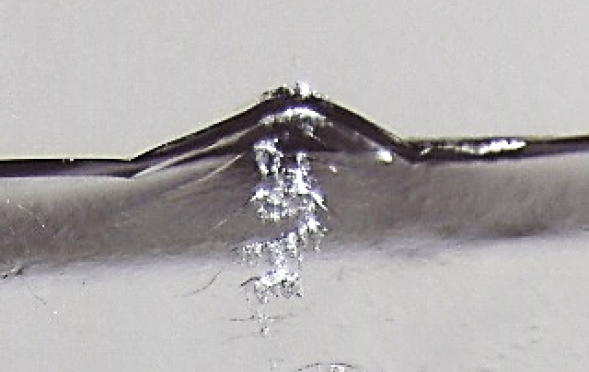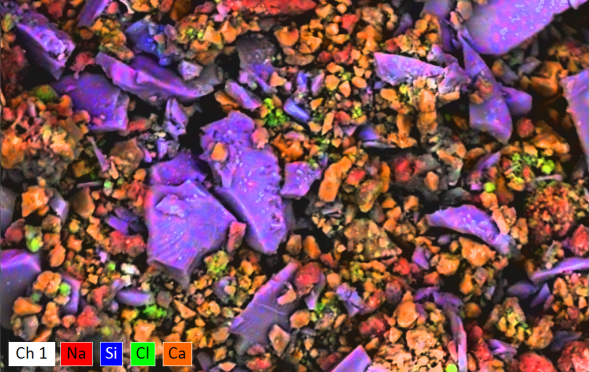Defect of the Month
Back to AGR's Library
No, that isn’t a new yoga pose! With a little bit of whimsy and imagination, this photomicrograph of a stone in glass looks like a frog swimming through green water. The cracked surface texture and tight solution sac are clues as to its origin, since both traits are characteristic of aluminosilicate refractory material. When this stone was analyzed via SEM-EDX, the interior consisted of recrystallized alumina and nepheline – both are commonly created by the reaction of an alumina-rich refractory with the glass melt.
Perhaps nothing says “cozy” like an image of grandma in a rocking chair, knitting a blanket with a big basket of yarn at her feet. The bunches of crystals in this Scanning Electron Microscope image appear remarkably similar to jumbled skeins of yarn, but have a very different source. They were found inside a molybdenum blister created in the glass melt when boosting electrodes were exposed to air in the furnace. The crystals themselves are composed primarily of sodium molybdate with a smaller amount of calcium molybdate.

While this might appear to be a road to a mountain, it is a magnified view of the horizontal crack revealed that the origin was related to a vertical scuff mark with a few associated crescent cracks. Further investigation led to the conclusion that the scuff marks had been created by the downward sliding contact of the heel of one bottle against the fractured bottle. This action most likely had occurred during case packing.

Have you ever wondered what was in the dust sucked up by your vacuum cleaner? At a glass plant, the profusion of compressed air lines, exhaust ducts, and cooling air means that there is a lot of air in circulation, all of which can contribute to a dusty environment. Filters are used to minimize the dustiness, and those filters sometimes become clogged. This EDX composition map shows the contents of one such filter. In an optical microscope, the dust looks like dirty sand, but the spectral map easily discerns between glass fragments, limestone, and soda ash. All three are batch materials used for making glass. The small amount of chlorine is due to salt.
Pagination
- Page 1
- Next page